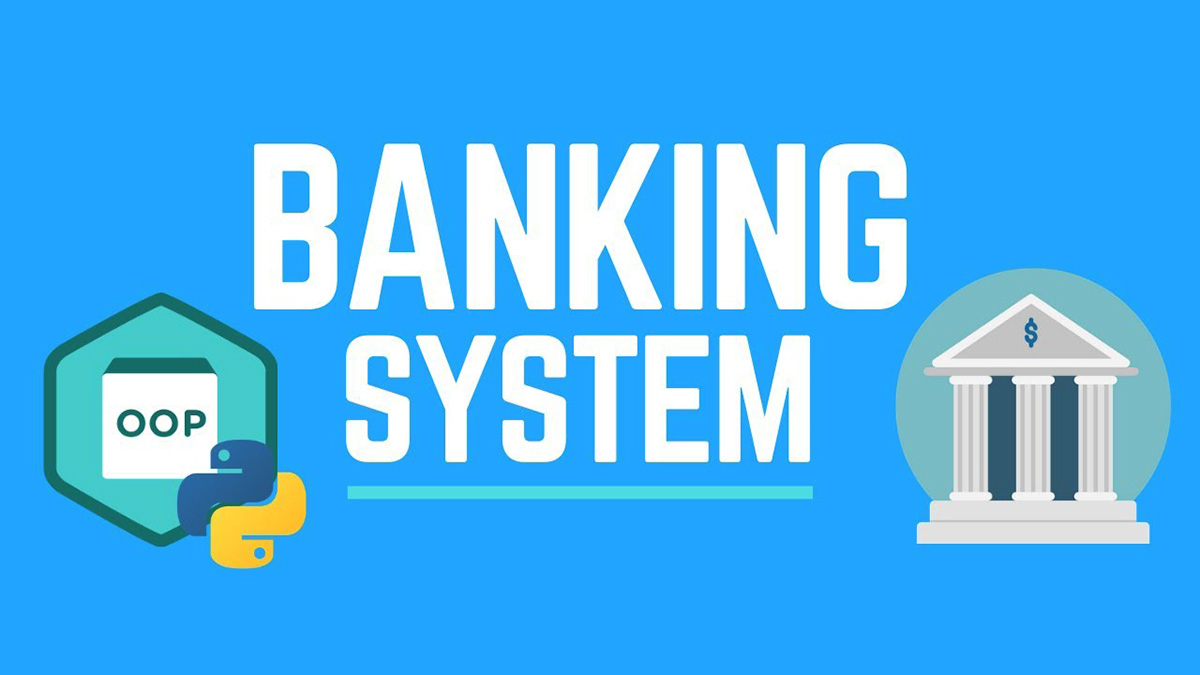

Finance
How To Create A Grandchild’s Savings Account
Modified: December 30, 2023
Looking to create a grandchild's savings account? Learn the ins and outs of managing finances for your loved ones and get expert tips on building a secure financial future.
(Many of the links in this article redirect to a specific reviewed product. Your purchase of these products through affiliate links helps to generate commission for LiveWell, at no extra cost. Learn more)
Table of Contents
- Introduction
- Step 1: Decide on the Purpose of the Account
- Step 2: Research Different Types of Savings Accounts
- Step 3: Choose the Right Bank or Financial Institution
- Step 4: Gather the Necessary Documentation
- Step 5: Set Up the Account
- Step 6: Determine the Funding Strategy
- Step 7: Monitor and Manage the Account
- Step 8: Teach Financial Literacy
- Conclusion
Introduction
Welcome to our guide on how to create a grandchild’s savings account! As a grandparent, you want to provide your grandchildren with a strong financial foundation and instill good money management habits from an early age. One of the best ways to do this is by setting up a savings account specifically for them.
A grandchild’s savings account not only serves as a safe place to store money but also promotes the development of essential financial skills such as saving, budgeting, and understanding the value of money. It can be an excellent tool to teach your grandchild about the importance of saving for the future, setting financial goals, and making responsible financial decisions.
In this guide, we will take you through the step-by-step process of creating a grandchild’s savings account. We will cover everything from deciding on the purpose of the account to teaching your grandchild about financial literacy. By the end of this guide, you will have the knowledge and tools to help your grandchild start their financial journey on the right foot.
Whether you’re planning to contribute to your grandchild’s college fund, save for a special occasion, or simply nurture their financial education, creating a dedicated savings account offers a practical and effective way to achieve these goals. So, let’s dive in and explore how to create a grandchild’s savings account!
Step 1: Decide on the Purpose of the Account
The first step in creating a grandchild’s savings account is to determine the purpose of the account. Ask yourself what you want to achieve by opening this account. Are you looking to save for your grandchild’s education, a future down payment on a house, or simply to help them develop good financial habits?
Having a clear purpose will help you plan and make informed decisions about the type of savings account that suits your needs. For example, if you’re saving for your grandchild’s education, you might consider a 529 college savings plan, which offers tax advantages for educational expenses. If your goal is to provide a nest egg for future expenses, a regular savings account or a custodial account might be more appropriate.
Additionally, consider the timeline of the savings goal. If you have many years to save, you may opt for investment accounts that offer higher potential returns but may carry more risk. On the other hand, if the goal is short-term, such as saving for a milestone event, a high-yield savings account might be a safer option.
It’s important to involve your grandchild in the decision-making process, especially if they are older. Discuss the purpose of the account with them and explain the importance of saving for their future. This will help them develop a sense of ownership and motivate them to actively participate in managing the account.
Remember, the purpose of the account can evolve over time. As your grandchild grows, their financial goals and needs may change. Stay flexible and adjust the purpose of the account accordingly to ensure it continues to support their financial well-being.
Step 2: Research Different Types of Savings Accounts
Once you have determined the purpose of your grandchild’s savings account, it’s time to research the various types of savings accounts available. Different banks and financial institutions offer different account options, each with its own features and benefits. Understanding the different types of accounts will help you make an informed decision that aligns with your goals.
Here are some common types of savings accounts to consider:
- Regular Savings Account: This is a basic savings account offered by banks. It typically has low or no minimum balance requirements and provides a safe place to deposit and grow money over time. Regular savings accounts usually offer lower interest rates compared to other account types.
- High-Yield Savings Account: High-yield savings accounts are similar to regular savings accounts but offer higher interest rates. These accounts often require a higher minimum balance and may have additional benefits such as ATM fee reimbursements or access to online banking tools.
- Certificate of Deposit (CD): A CD is a time deposit account where you agree to keep your money deposited for a specified period, such as six months or one year. CDs typically offer higher interest rates than regular savings accounts, but you will face penalties if you wish to withdraw the money before the maturity date.
- Money Market Account: Money market accounts are a hybrid between a savings account and a checking account. They offer higher interest rates than regular savings accounts and may come with check-writing capabilities and ATM access. Money market accounts often require a higher minimum balance.
- Custodial Account: A custodial account is created and managed by an adult on behalf of a minor. It allows you to transfer assets and funds to your grandchild, who becomes the account beneficiary once they reach the age of majority. Custodial accounts offer flexibility in terms of investment options and may provide tax benefits.
Consider the features, interest rates, fees, and accessibility of each type of account when making your decision. It’s also helpful to compare offerings from different banks to find the account that best fits your needs. Take note of any special promotions or incentives offered for opening a new account.
Remember, each account type has its own advantages and considerations. Think about your grandchild’s financial goals, investment risk tolerance, and the timeline for accessing the funds when selecting the most suitable savings account for them.
Step 3: Choose the Right Bank or Financial Institution
Once you have identified the type of savings account that aligns with your goals, it’s time to choose the right bank or financial institution to open the account. Selecting a reputable and reliable institution is crucial to ensure the safety and growth of your grandchild’s savings.
Here are some factors to consider when choosing a bank or financial institution:
- Reputation: Look for banks or financial institutions with a good reputation and solid track record in handling savings accounts. Research online reviews and ratings to get a sense of their reputation and the experiences of other customers.
- FDIC Insurance: Make sure the bank is a member of the Federal Deposit Insurance Corporation (FDIC). This ensures that the funds deposited in the savings account, up to the FDIC insurance limit, are protected in case the bank fails.
- Accessibility: Consider the convenience and accessibility of the bank. Are there physical branch locations nearby? Is online banking available? Do they have a mobile app for easy account management? Ensure that you and your grandchild can access the account easily and conveniently.
- Interest Rates: Compare the interest rates offered by different banks for the type of savings account you have chosen. Look for competitive rates that can help your grandchild’s savings grow over time.
- Fees and Account Requirements: Review the fees associated with the savings account, such as maintenance fees, transaction fees, or minimum balance requirements. Choose an account with minimal fees and manageable account requirements.
- Additional Benefits: Some banks offer additional benefits with their savings accounts, such as educational resources, financial tools, or loyalty programs. Consider these extra perks when making your decision.
Take your time to research and compare different banks or financial institutions. You may also consider speaking with a representative from each institution to get more information about their services and address any specific questions or concerns you have.
Remember, the bank or financial institution you choose should be one that you trust and feel comfortable with, as they will play a vital role in safeguarding your grandchild’s savings and helping it grow over time.
Step 4: Gather the Necessary Documentation
Before you can open a savings account for your grandchild, you will need to gather the necessary documentation. Each bank or financial institution may have slightly different requirements, but generally, the following documents are typically needed:
- Identification: You will need to provide valid identification for both yourself and your grandchild. This can include government-issued IDs such as a driver’s license, passport, or social security card.
- Proof of Address: Some banks may require proof of address, which can be a utility bill, bank statement, or lease agreement that shows your current residential address.
- Proof of Relationship: To establish your relationship with your grandchild, you may be asked to provide a birth certificate or legal documents such as guardianship papers or adoption papers.
- Social Security Number: You and your grandchild will need to provide your Social Security Numbers or Individual Taxpayer Identification Numbers (ITINs) for tax reporting purposes.
- Financial Information: Some banks may ask for your financial information, such as your income, employment details, or source of funds. This is usually required to comply with anti-money laundering regulations.
It’s essential to check with the specific bank or financial institution regarding their documentation requirements before visiting a branch or opening an account online. This will ensure that you have all the necessary paperwork in order and can expedite the account setup process.
Additionally, it’s a good idea to make copies of all the documents you provide and store them in a secure location for your records. This will be helpful in case you need to refer back to them in the future or if any issues arise with the account.
By gathering the required documentation ahead of time, you can streamline the account opening process and ensure a smooth transition to the next step of creating your grandchild’s savings account.
Step 5: Set Up the Account
Now that you have completed the necessary preparations, it’s time to actually set up your grandchild’s savings account. This step involves contacting the chosen bank or financial institution and initiating the account setup process.
Here are the general steps to follow when setting up the account:
- Contact the Bank: Reach out to the bank or financial institution either by visiting a branch in person, calling their customer service, or applying online. Inform them that you want to open a savings account for your grandchild and ask about the specific requirements and procedures.
- Provide the Documentation: Submit all the necessary documentation that you gathered in the previous step. This includes identification documents for both yourself and your grandchild, proof of address, proof of relationship, Social Security Numbers or ITINs, and any other requested financial information.
- Choose the Account Type: Specify the type of savings account you have decided on, whether it’s a regular savings account, high-yield savings account, custodial account, or any other suitable option. The bank representative will guide you through the available choices and help you select the most appropriate account type.
- Deposit Funds: Determine the initial deposit amount required to open the account, and deposit the funds into the account. The bank may accept cash, checks, or allow electronic transfers from another bank account.
- Review and Sign the Account Agreement: Carefully read through the terms and conditions of the account agreement provided by the bank. This document outlines the rules, fees, interest rates, and other important details related to the account. If everything looks satisfactory, sign the agreement to finalize the account setup.
- Receive Account Information: Once the account is set up, the bank will provide you with important account information, such as the account number, online banking login details, and any associated debit cards or checks.
During the account setup process, you may have the option to set up automatic transfers, designate beneficiaries, or choose account management features that suit your needs. Be sure to inquire about these additional services if they align with your goals.
Setting up the account may take some time, but the bank representative will guide you through the process and answer any questions you have. Once everything is complete, congratulations! You have successfully set up a savings account for your grandchild.
Step 6: Determine the Funding Strategy
Now that the account is set up, it’s time to determine the funding strategy for your grandchild’s savings account. This step involves deciding how and when to contribute money to the account to help it grow over time.
Here are some strategies to consider:
- Regular Contributions: Determine a set amount that you will contribute to the account on a regular basis. This could be weekly, monthly, or at any interval that suits your financial situation. Setting up automatic transfers or direct deposits can make it easier to consistently fund the account.
- Special Occasions: Take advantage of special occasions such as birthdays, holidays, or anniversaries to make larger, one-time contributions to the account. Encourage family members and friends to contribute to the account as meaningful gifts for your grandchild’s future.
- Matching Contributions: Consider matching a portion of your grandchild’s contributions to the account. This can provide an incentive for them to save and also teach them the value of matching funds. For example, you could match 50% of their monthly savings to encourage consistent saving habits.
- Education Savings Plans: If you are saving for your grandchild’s education, explore options such as 529 college savings plans. These plans offer tax advantages and may allow for larger contributions to support their future educational expenses.
- Discuss Financial Goals: Engage your grandchild in conversations about financial goals. Encourage them to set savings targets and discuss strategies to achieve those goals. By involving them in the funding strategy, you can help build their financial awareness and responsibility.
- Monitor Progress: Regularly monitor the account’s growth and progress towards the savings goals. This will help you assess whether adjustments need to be made to your funding strategy. If necessary, revise the contribution amounts or frequency to align with your grandchild’s financial needs.
Remember, consistency is key when it comes to funding your grandchild’s savings account. Whether you contribute small amounts regularly or larger sums on occasion, the key is to establish a habit of saving and nurture a long-term savings mindset for your grandchild.
By carefully considering your funding strategy and consistently contributing to the account, you are actively helping your grandchild build a solid financial foundation for their future.
Step 7: Monitor and Manage the Account
Once your grandchild’s savings account is set up and funded, it’s important to regularly monitor and manage the account to ensure its growth and financial well-being. This step involves active engagement in overseeing the account’s progress and making any necessary adjustments.
Here are some actions to consider for monitoring and managing the account:
- Review Account Statements: Regularly review the account statements provided by the bank. This will help you keep track of the account balance, interest earned, and any transactions made. If you notice any discrepancies or unauthorized activity, contact the bank immediately.
- Track Savings Goals: Keep a record of your grandchild’s savings goals and regularly assess how they are progressing. This will help you determine if adjustments need to be made to the funding strategy or if additional support is required to achieve the desired goals.
- Encourage Savings Habits: Continuously encourage your grandchild to develop and maintain good savings habits. Remind them of the importance of saving regularly and the long-term benefits it provides. Offer praise and rewards for their milestones and achievements.
- Educate on Financial Literacy: Use the savings account as an opportunity to teach your grandchild about financial literacy. Discuss concepts such as interest, compound interest, budgeting, and responsible spending. Help them develop a deeper understanding of money management principles.
- Stay Informed: Keep up-to-date with any changes in the account terms and conditions, interest rates, or fees. Stay informed about the bank’s services and resources that can benefit your grandchild’s financial growth and education.
- Periodic Review and Adjustments: Conduct periodic reviews of the account’s performance and reevaluate the savings goals and funding strategy. Adjustments might be necessary as your grandchild’s financial needs and circumstances evolve. This ensures that the account remains aligned with their goals.
By actively monitoring and managing the account, you can ensure that your grandchild’s savings are being properly utilized and continue to grow. Regular involvement in their financial journey will bolster their financial literacy and provide valuable guidance as they navigate the world of personal finance.
Remember, open communication with your grandchild about the account’s progress and their financial goals will foster a sense of responsibility and empowerment, ultimately setting them up for a positive financial future.
Step 8: Teach Financial Literacy
One of the most valuable aspects of creating a grandchild’s savings account is the opportunity to teach them about financial literacy. This step involves actively educating and empowering your grandchild with the knowledge and skills needed to make informed financial decisions.
Here are some strategies to consider for teaching financial literacy:
- Start Early: Begin teaching financial literacy from an early age. This can include basic concepts like the value of money, saving, and spending wisely. Use age-appropriate examples and activities to engage them and make learning about money fun.
- Set a Good Example: Be a role model for your grandchild by demonstrating responsible financial habits. Show them the importance of budgeting, saving, and making thoughtful financial choices. Let them observe as you manage your own finances and involve them in age-appropriate discussions.
- Explain Compound Interest: Teach your grandchild about the power of compound interest. Help them understand how their savings can grow over time with the magic of compounding. Show them practical examples and explain how patience and consistency can lead to significant long-term savings.
- Discuss Different Savings Goals: Encourage your grandchild to set savings goals and explain the concept of short-term, mid-term, and long-term goals. Help them understand the importance of prioritizing their goals and making decisions that align with their financial aspirations.
- Involve them in the Budgeting Process: Teach your grandchild the basics of creating a budget. Show them how to allocate their income into saving, spending, and giving categories. Involve them in decisions about money allocation, allowing them to exercise their financial decision-making skills.
- Introduce Basic Investing Concepts: As your grandchild grows older, introduce them to basic investment concepts such as stocks, bonds, and mutual funds. Teach them about risk and reward and explain the importance of diversification. Instill a curiosity for investing by sharing stories about successful investors or discussing current financial news.
- Encourage Financial Independence: Gradually give your grandchild more responsibility for their own finances. Help them open a checking account, explain how debit cards work, and teach them about responsible credit card usage. Guide them through the process of making their own financial decisions while emphasizing the importance of mindful spending and saving.
- Stay Updated: Keep yourself informed about relevant financial topics, trends, and resources. This will allow you to provide accurate and up-to-date information to your grandchild. Share articles, books, or online resources that can further enhance their financial knowledge.
By teaching your grandchild about financial literacy, you are equipping them with essential life skills that will benefit them throughout their lives. Financial education helps them make informed decisions, empowers them to take control of their finances, and sets them on a path toward financial security and independence.
Remember to approach financial education with patience, adapt the lessons to their age and understanding, and celebrate their progress and achievements along the way. Your guidance and support will make a meaningful impact on their financial well-being.
Conclusion
Congratulations! You have now reached the end of our guide on how to create a grandchild’s savings account. By following these steps, you have taken an important step towards securing your grandchild’s financial future and instilling valuable money management skills.
Creating a dedicated savings account for your grandchild serves as a tangible expression of your love and commitment to their well-being. It provides a platform for teaching financial literacy, promoting saving habits, and fostering a sense of responsibility and independence.
Remember, as you embark on this financial journey with your grandchild, it’s essential to keep communication channels open and involve them in the decision-making process. Engage in conversations about financial goals, encourage regular saving, and provide guidance as they navigate their financial journey.
Regularly review and monitor the account’s progress, making adjustments to the funding strategy as necessary. Additionally, use this opportunity to teach your grandchild about financial literacy, sharing knowledge about saving, budgeting, investing, and making informed financial decisions.
By promoting financial literacy, you are equipping your grandchild with invaluable skills that will guide them throughout their lives. As they grow, their financial goals may change, and their understanding of money management will evolve. Your ongoing support and guidance will remain instrumental in their financial success.
Creating a grandchild’s savings account is more than just a financial gesture; it is an investment in their future. By providing a solid financial foundation, you are giving them the tools to navigate the opportunities and challenges that may come their way.
Remember, Rome wasn’t built in a day, and financial literacy is a lifelong journey. Be patient, adaptable, and open to their needs and aspirations as you guide them towards a financially secure future.
Thank you for joining us on this guide, and we wish you and your grandchild every success in their financial endeavors!














